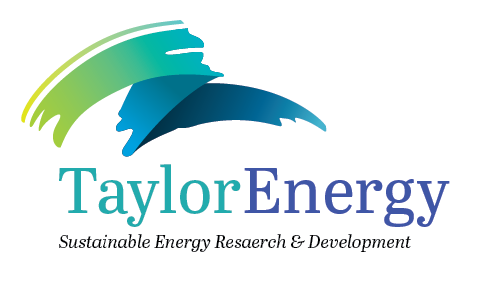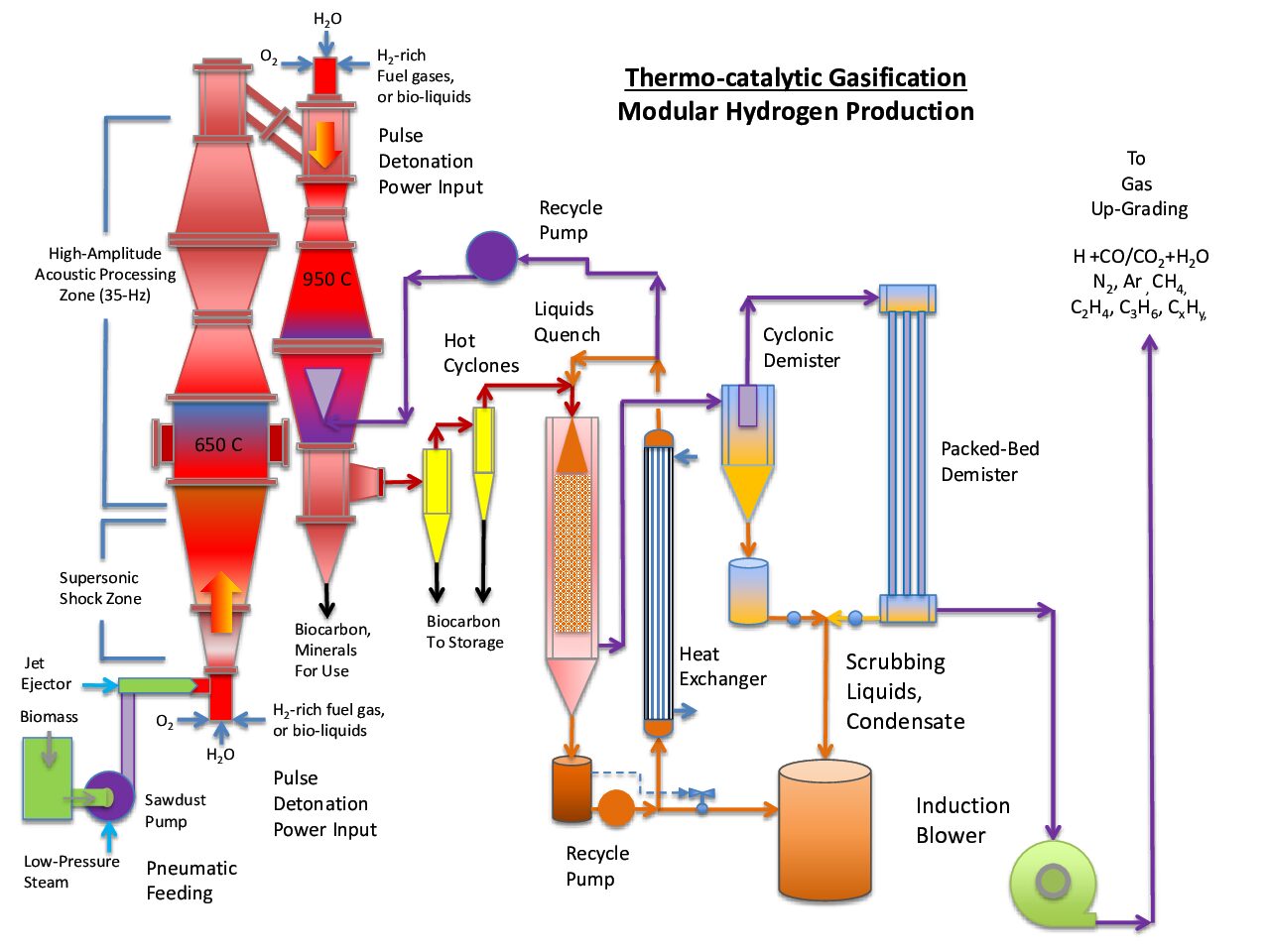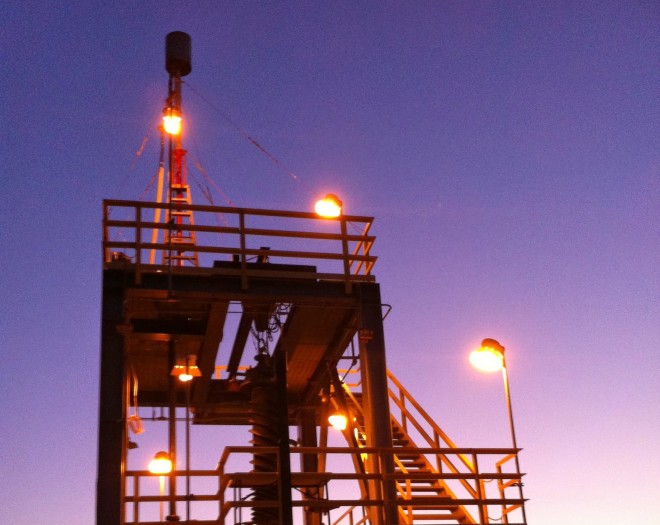Pulse Detonation Derived Acoustic Power — The project approach requires the development and demonstration of a highly innovative pulse detonation power system used to generate acoustic power by firing O2/Fuel/H2O mixtures at 30 Hz, thereby discharging supersonic hot-exhaust gases into the thermal processing zone. Pulsed gas momentum and supersonic shocks are expected to improve the heat and mass transfer by operating with greater mixing intensity compared to traditional high-velocity oxy-fuel burners used for high-pressure entrained flow gasification.
The term “Detonation engine” is appropriate because compression work is performed during each constant-volume combustion event (heat-addition), when heat is converted into power as gas-momentum according to the Humphrey Cycle. Power input to a thermo-conversion process in the form of repetitive supersonic shockwaves attenuates within a meter or so into powerful acoustic waves that help deconstruct organic molecules that are fibro-flexible matrix structures with inherent stability. The image below shows one detonation progressing from left to right. After progressing 10 ms to the center of the detonation run-up tube, note the red zones indicating the high-temperature wavefront created by one detonation (Figure 1).
Figure 1. Detonation Temperature Profile 10-ms after ignition
Figure 2. Pulse Detonation Power Cycle using Gaseous Inputs
Pf and Ppg are input as pressurized liquids, injected into an oxygen mixing head using commercially available Gasoline Direct Injection (GDI) fuel injectors. Using GDI fuel injectors provides precise control of the fuel input and the water input and allows for precise measurement of the inputs consumed during operational testing.
Liquid propane is typically used as the fuel (Pf) for continuous testing. Gaseous propane, hydrogen, ethane, and propylene gases were also tested successfully during shorter operational periods; the fuel injection pressure can be varied from 300-psig to 1000-psig. Liquid water is used for the purge cycle (Ppg) can be injected at 700-psig to 1200-psig. Gaseous CO2 was also tested successfully to serve as the purge gas (Ppg).
Input signals are indicated for the spark and injector timing, and the corresponding end-wall pressure histories, along with the on/off timing fuel and oxidizer (Figure 3).
Figure 3. Operational Sequence Diagram
The project objectives necessitate increasing the acoustic power output, which requires the pulse detonation frequency to be increased from 5-Hz (the system capability at the start of this research project) to 40-Hz. The acoustic power output is directly proportional to the detonation frequency.





